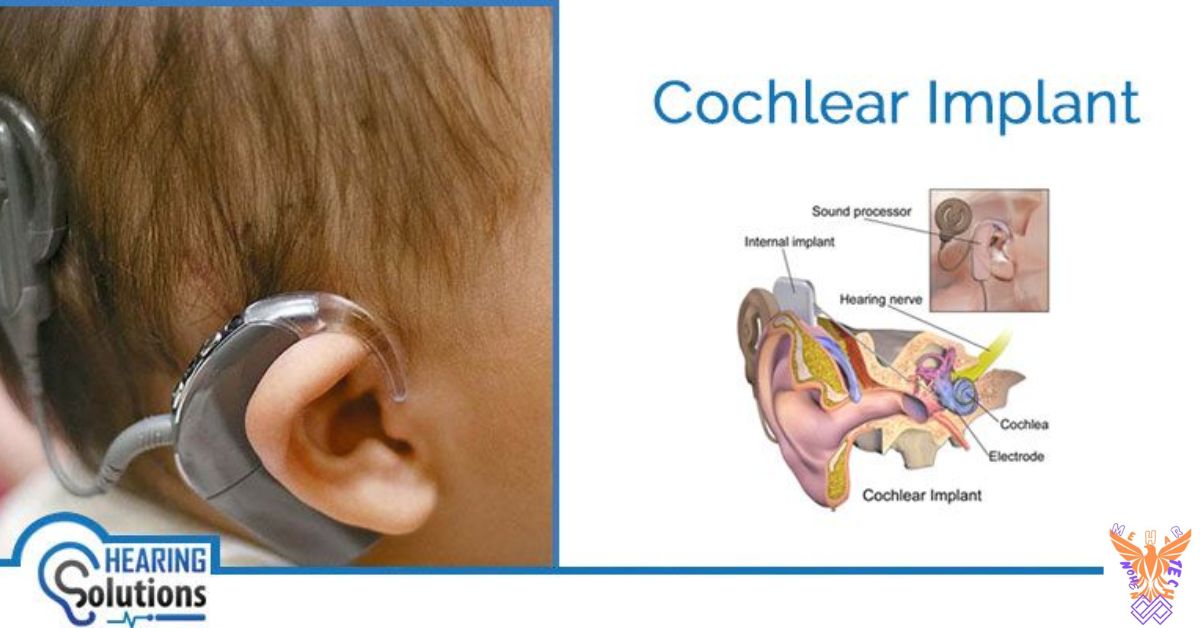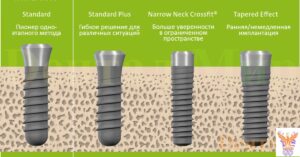Ever wondered how technology can restore hearing? Enter cochlear implants, the groundbreaking devices changing lives for those with severe hearing loss. These tiny marvels of engineering bypass damaged parts of the ear, directly stimulating the auditory nerve.
Cochlear implants are not just technology. They are advancing quickly keeping up with the developments. With features, like smartphone connectivity and AI driven sound processing these devices are becoming more intelligent and efficient every day.
In this piece we’ll explore the developments influencing cochlear implant technology. You’ll learn about how these advancementsre enhancing not the quality of sound but also enhancing the everyday lives of users. Whether you have a passion for technology or a general interest in advancements get ready, for an experience.
Importance of Technological Advancements
Recent technological advancements are transforming the landscape of cochlear implants in ways. These innovations go beyond gadgets; they serve as tools, for individuals experiencing hearing impairment. Enhanced technology leads to improved clarity, smoother communication and an overall enhancement, in the quality of life.
It’s not, about improving ones hearing abilities. Advancements in technology are creating sturdier and more user cochlear implants. This results in enhanced comfort for individuals using them. Reduces the need for visits to healthcare providers. Plus, as the tech improves, more people can benefit from these amazing devices.
Overview of Current Technological Landscape
Cochlear implants nowadays have advanced significantly compared to models. The latest technology includes AI driven sound processing that can adapt to surroundings. Just picture having an implant that adjusts itself seamlessly as you transition from a room, to a street!
Connectivity is another game-changer. Many implants now link up with smartphones, letting users stream music or take calls directly. Don’t overlook battery life too. The latest versions have improved longevity and charging capabilities. The field of hearing technology is constantly evolving with advancements emerging regularly.
Miniaturization of Implant Components
- Tiny tech, big impact: New implants are shrinking fast
- Less invasive surgery: Smaller parts mean smaller incisions
- Hidden helpers: Tinier components are easier to conceal
- Power-packed pixies: Smaller doesn’t mean less powerful
- Comfort boost: Lighter, more compact devices reduce physical strain
- Quick recovery: Smaller implants often mean faster healing times
- Child-friendly: Miniaturized components work better for kids’ smaller heads
- Future-forward: Micro-sized implants could lead to fully invisible devices
- Battery bonanza: Smaller parts often need less power to run
- Durability dilemma: Balancing size reduction with long-lasting construction
- Precision plus: Miniaturization allows for more targeted nerve stimulation
- Cost considerations: Smaller parts might lead to more affordable implants
Wireless Connectivity and Bluetooth Integration
T he era of bulky standalone cochlear implants is, in the past. Nowadays these devices are going wireless. Its a game changer. Users can now enjoy streaming music answering phone calls and watching TV directly through their implants. It’s like having a Bluetooth earpiece that invisible but there.
However it’s not about entertainment. This connectivity brings forth a world of opportunities for remote adjustments and monitoring. Audiologists can fine tune the implants without needing face to face appointments, which definitely makes life more convenient for users. Moreover thanks to Bluetooth technology implant wearers can connect to devices, like fitness trackers and home assistants.
Related this post: Exploring the Unknown: Innovation and Discovery in Technology Labs
Artificial Intelligence Applications in Cochlear Implants
AI is making cochlear implants smarter than ever. These clever devices can now learn and adapt to a user’s listening preferences over time. It’s like having a personal sound engineer in your ear, constantly tweaking settings to give you the best hearing experience.
But AI’s role doesn’t stop there. It’s helping implants distinguish between speech and background noise more effectively. This means clearer conversations in noisy environments like restaurants or parties. AI is also being used to predict and prevent potential issues, keeping implants running smoothly and reducing the need for repairs.
Advancements in Signal Processing Algorithms
Signal processing is the unsung hero of cochlear implant tech. New algorithms are working overtime to deliver clearer, more natural sound. They’re getting better at mimicking how a healthy ear processes sound, leading to more realistic hearing experiences for users.
These algorithms are also tackling one of the biggest challenges in hearing tech: music appreciation. Newer processing techniques are helping implant users enjoy music with greater clarity and depth. And it’s not just about enjoyment – better signal processing means improved speech recognition, especially in challenging listening situations.
Enhanced Speech Recognition Technology
Speech recognition in cochlear implants is getting a serious upgrade. The latest tech can pick out voices from background noise like never before. It’s like having a built-in sound editor, focusing on what you want to hear and muting the rest. Users can now follow conversations in noisy restaurants or bustling streets with much less effort.
But it doesn’t stop there. These smart implants are learning to recognize specific voices too. Imagine your device automatically adjusting to hear your child’s soft voice or your partner’s whisper. Some systems can even translate languages in real-time, opening up a world of communication possibilities. It’s not just about hearing anymore – it’s about understanding in ways we never thought possible.
Tele audiology and Remote Programming
| Aspect | Tele audiology | Remote Programming |
| Definition | Broader field of remote hearing healthcare services | Specific process of adjusting cochlear implant settings from afar |
| Scope | Includes diagnostics, counseling, | Focuses on fine-tuning implant parameters |
| Technology Used | Video conferencing, audiometers, otoscopes follow-up care | Specialized software, secure data transmission |
| User Involvement | Active participation in tests and consultations | Minimal; mainly provides feedback on adjustments |
| Frequency | Regular check-ups and as-needed basis | Periodic or when performance issues arise |
| Duration | Can involve longer sessions for comprehensive care | Usually shorter, focused sessions |
| Healthcare Providers | Audiologists, speech therapists, ENT doctors | Primarily audiologists and implant specialists |
| Benefits | Reduces travel, increases access to care | Allows for quick tweaks without clinic visits |
| Limitations | Some tests may still require in-person visits | Requires stable internet connection |
| Data Collection | Gathers various hearing health metrics | Collects specific implant performance data |
| Patient Education | Offers broader hearing health education | Focuses on implant use and optimization |
| Emergency Use | Can address urgent hearing issues remotely | Helpful for immediate implant troubleshooting
|
This table highlights the key differences between Tele audiology and Remote Programming, showing how they complement each other in providing comprehensive remote care for cochlear implant users.
Biocompatible Materials in Implant Construction
- Body-friendly tech: New materials that play nice with human tissue
- Allergy alleviation: Hypoallergenic components reduce rejection risks
- Titanium triumph: Lightweight, strong, and well-tolerated by the body
- Silicone solutions: Flexible, durable materials for comfortable fit
- Ceramic champions: Tough materials that resist wear and tear
- Longevity boost: Materials that last longer inside the body
- Infection fighters: Antimicrobial coatings to ward off bacteria
- Bone buddies: Materials that encourage bone growth around implants
- Nanotech novelties: Microscopic materials for better integration
- Dissolvable delights: Components that harmlessly break down over time
- MRI-friendly materials: Implants that don’t interfere with medical scans
- Nature-inspired: Biomimetic materials that mimic natural body structures
- Healing helpers: Materials that promote faster recovery post-surgery
- Customization kings: 3D-printable biocompatible materials for perfect fit
User Interface Innovations
Cochlear implant controls are getting a major makeover. Gone are the days of fiddling with tiny buttons. Now, users can adjust their devices with simple smartphone apps. It’s as easy as tweaking the volume on your music player, but for your hearing!
These new interfaces aren’t just about looks. They’re packed with features like custom sound profiles for different environments. Heading to a concert? Swipe right. Quiet library? Swipe left. It’s putting more control in users’ hands, literally. Plus, many apps now include helpful tips and troubleshooting guides, making life with an implant much smoother.
Future Prospects and Emerging Technologies
The future of cochlear implants is looking bright – and tiny. Scientists are working on implants so small they could be inserted without surgery. Imagine getting better hearing as easily as getting your ears pierced.
But size isn’t everything. Researchers are exploring ways to use light instead of electricity to stimulate hearing nerves. This could lead to more precise sound and even restore color perception for some users. And let’s not forget about power – solar-powered implants could one day eliminate the need for battery changes altogether.
Ethical and Social Implications
As cochlear implant tech advances, it’s stirring up some big questions. Some worry that these “super ears” might give users an unfair advantage. Imagine being able to hear a whisper from across the room – cool or creepy?
There’s also debate in the Deaf community. While many celebrate the technology, others see it as a threat to Deaf culture and sign language. It’s a complex issue with no easy answers. As the tech improves, society will need to grapple with these questions and find a balance that respects all perspectives.
Frequently Asked Question
How often do cochlear implants need to be replaced?
Usually it happens every 15 to 20 years although the timing can change depending on progress and personal requirements.
Can cochlear implant users swim?
Yes, with waterproof accessories. Many modern implants are water-resistant.
Do cochlear implants restore normal hearing?
Not exactly. They provide a useful representation of sounds to aid understanding.
Are cochlear implants suitable for all types of hearing loss?
They are primarily designed for individuals, with severe, to profound hearing loss.
Can cochlear implant users listen to music?
Yes, though the experience differs from natural hearing. Many users enjoy music with practice.
Conclusion
The development of cochlear technology is progressing rapidly. With advancements, like AI driven sound processing and wireless capabilities these small wonders are changing lives in ways we never thought possible a while ago.
They’re more than hearing aids – they serve as pathways to a more interconnected and inclusive world, for individuals facing hearing challenges. However the rapid advancement of technology comes with its set of obstacles.
With the increasing sophistication of implants we are encountering concerns surrounding privacy, equity and the fundamental essence of perception. The deaf community is navigating discussions, about their sense of self and heritage. It serves as an illustration that immense technological capabilities profound ethical considerations.
















